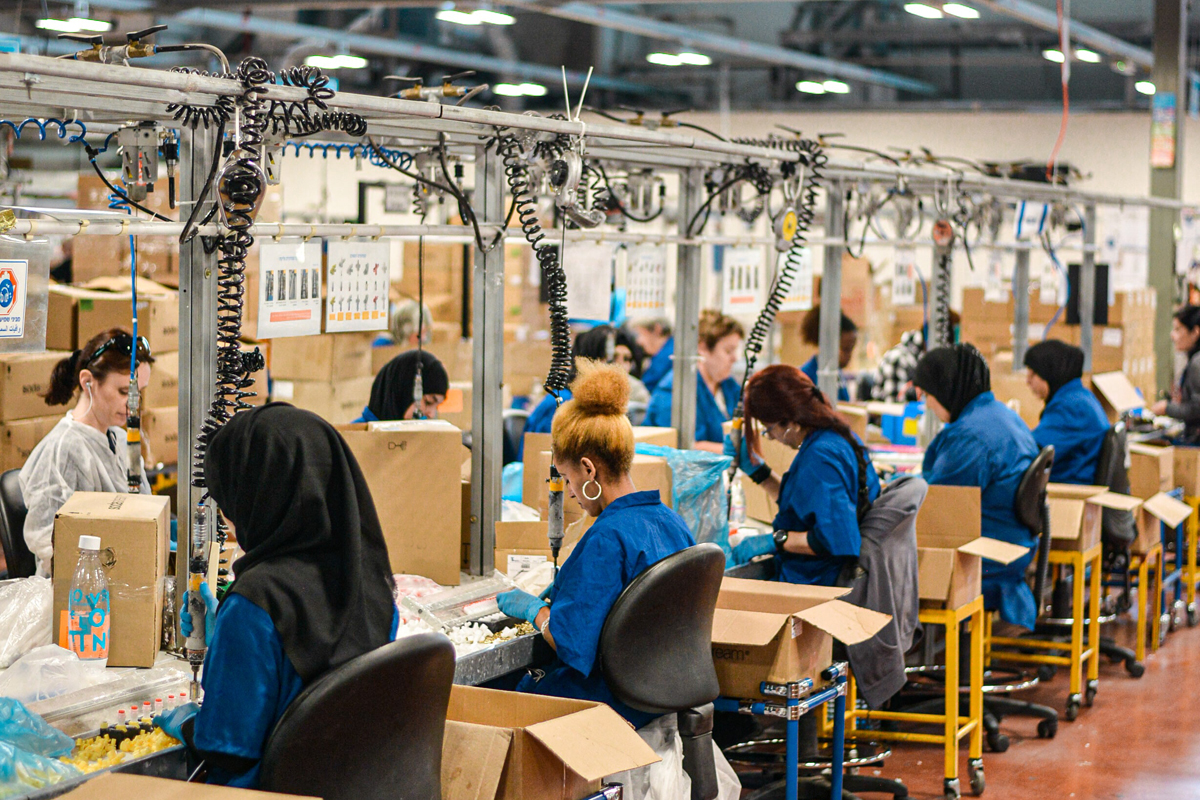European Uncertainty Highlights Advantages Of Nearshoring Production

The Ukraine crisis’ disruption on the global order, countries, businesses and individual lives is bound to be far-reaching and long-lasting. It’s an uncertain time, and for companies importing products from overseas, this complication is compounded by the pandemic, trade disputes and other issues.
Many importers in the promotional products industry may be looking at their sourcing in China and elsewhere in Asia and wondering what this may mean for them and their long-term production plans. On Wednesday, China was one of 35 countries abstaining from a United Nations resolutions condemning Russia’s invasion of Ukraine. Only five nations voted against the resolution, including Russia and Belarus.
Raine Mahdi, founder of worldwide sourcing platform Zipfox, warns that U.S. businesses importing products may see their supply chains further slowed or halted altogether if the conflict continues to escalate. The effects aren’t only limited to promotional products businesses importing from Eastern Europe or even the European Union, but potentially China.
“The outcomes are either bad or terrible,” says Mahdi, speaking to PPB Newslink. “If China supports Russia in any capacity, the U.S. is likely to take swift action in the form of increased tariffs—which have already been in consideration after significantly failing to meet their Phase One trade deal commitments—or even sanctions. I’d be surprised to see China make a move that prompts sanctions, but far less surprised to see 50% tariffs.
“It’s important for U.S. importers to be honest with themselves about what will likely happen next in this chain of events. Trade talks with China have gone terrible and there’s been recent mention of increasing the 25% tariffs. Those of us who were importing from China when these tariffs were originally put in place remember that there’s very short notice given when it happens.”
 In February, Reuters reported that the Biden administration was considering a range of options to push China to honor commitments made in 2020 to purchase U.S. goods, energy and services. The U.S. Census Bureau data shows that China has made approximately 60% of the $200 billion in additional purchasing it agreed to in the Phase One trade deal in 2020, and increased tariffs imposed on certain Chinese imports is one alternative the White House is considering to enforce the obligation.
In February, Reuters reported that the Biden administration was considering a range of options to push China to honor commitments made in 2020 to purchase U.S. goods, energy and services. The U.S. Census Bureau data shows that China has made approximately 60% of the $200 billion in additional purchasing it agreed to in the Phase One trade deal in 2020, and increased tariffs imposed on certain Chinese imports is one alternative the White House is considering to enforce the obligation.
Mahdi says, “If China even supports Russia indirectly by, let say, purchasing the surplus of valuable metals and fuel Russia is unable to offload due to sanctions—that could be enough to prompt action from the U.S. Even if China doesn’t support Russia but the conflict rages on, we could find ourselves fighting a war across the same ocean where goods are shipped from China. This would add to the logistical nightmare we’ve experienced over the past 15 months and push delivery times/costs from China even higher. Just imagine what 80-day delivery times and $30K containers would do to the supply chain. We’re at approximately 60 days now and it's been pretty brutal.”
Mahdi sees production sources closer to home as an answer. Bringing production to the U.S. or nearshoring it to a neighboring country is one option to remove some of the uncertainty from supply chains. The transition can be time consuming and costly, but Mahdi suggests it’s worth it. He says, “If you spend 60 extra days setting up your new supplier in Mexico on order one, that’s the same amount of time it would have taken you to order from China anyway. Now you get to enjoy five to 10 day delivery times on all your future orders. If you’re going to stick with China for now, you should at least start ordering samples from Mexico to get yourself prepared. To not at least do that is just negligent in my opinion.”
Mahdi emphasizes nearshoring as the only real workaround to trade war tariffs, political tension and long delivery times. He says, “There's a tidal wave of U.S. businesses shifting production to Mexico as fast as they can. The trade war and port congestion turned out to be stickier than people expected. The silver lining is that it forced people to snap out of the China cycle and look at other options. What they found is that we’ve got a great partner next door in Mexico who can deliver high quality goods in five to 10 days.”
Supply chains are large and complicated beasts, and shifting one across an ocean represents a significant investment in time, money and effort. Mahdi notes that while some products are still easier to find in Asia, Mexico has high quality manufacturing, a skilled labor force and already has a wide array of goods available, and as demand from the U.S. increases, the country will quickly expand its capabilities to meet it.
Shipping times from Mexico compare favorably to China, Mahdi points out, and as items come mainly by land, seaport congestion is no longer a factor.
Ships are sitting at anchor off the Port of Long Beach for approximately 25 days, and shipping costs from China rose another 5% last month—Mahdi pegs their current prices at approximately three to four times that of shipping from Mexico. A container from China will cost $15,000 to $18,000, while the same container from Mexico costs $4,000 to $5,000. Other advantages he highlights are that due to the United States-Mexico-Canada Agreement (USMCA), imports from Mexico avoid the tariffs on many Chinese goods, and that the shared time zones with the U.S. make communication easier and travel times shorter.
“The time to be proactive is now,” Mahdi says. “If your strategy is to wait and see, it’s a huge gamble and the odds are not in your favor. Nobody likes having to set up a new supplier, but 50% tariffs or 80-day delivery times would be devastating. For businesses who fail to act soon enough, it could be the end of the road.”

